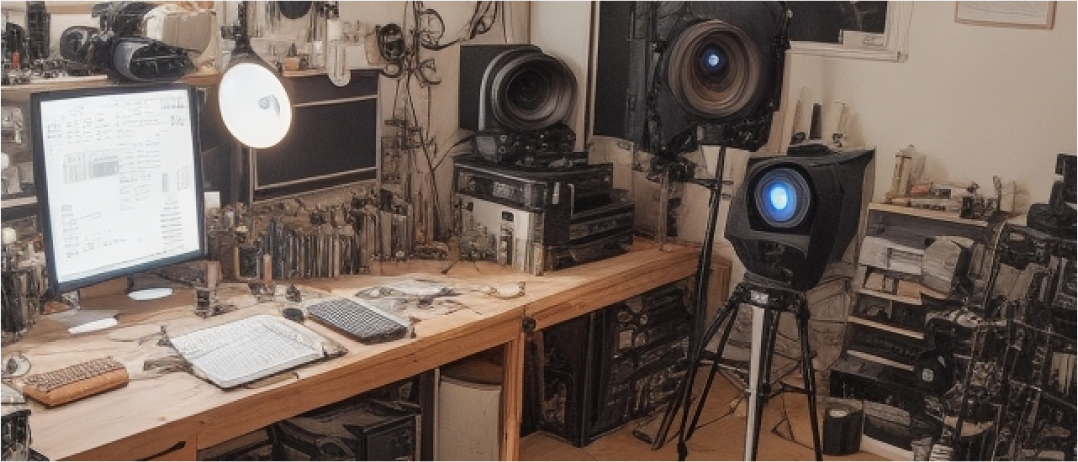There’s a certain alchemy that transforms raw footage into a captivating movie—a transformation that occurs in the crucible of a filmmaker’s studio. Often tucked away behind nondescript walls or in unsuspecting buildings, a filmmaker’s studio is the embodiment of creative potential, the equivalent of an artist’s atelier or a musician’s recording space. It’s not merely a room filled with equipment; it’s a sacred space where ideas metamorphose into visual stories. But what exactly goes into the making of such an extraordinary realm? Here, we dissect the anatomy of a filmmaker’s studio.
The Heart: The Editing Suite
At the core of every filmmaker’s studio is the editing suite—a powerful workstation that serves as the central command for the entire filmmaking process. This is where raw footage becomes the carefully woven fabric of a compelling narrative. A high-performance computer, decked out with specialized software like Adobe Premiere Pro, Final Cut Pro, or DaVinci Resolve, is the beating heart of this space. Here, editors spend countless hours scrubbing through clips, applying color correction, mixing audio, and giving life to the filmmaker’s vision.
The Brain: The Planning Area
Before the first scene is shot or the first line of dialogue is uttered, there needs to be a strategy. The planning area serves as the brain of the filmmaker’s studio. This could be a simple whiteboard with sticky notes representing different scenes, a corkboard pinned with character sketches, or even an expansive table covered in storyboards and script drafts. This is where the abstract notion of a film gets dissected, understood, and transformed into a shooting schedule and a project timeline.
The Senses: Audio-Visual Equipment
Cameras, lenses, microphones, and lighting rigs form the sensory organs of a filmmaker’s studio. They are the tools that capture the sight and sound of the story, feeding them into the system for processing. Whether it’s a high-end ARRI Alexa or a more modest DSLR, the choice of equipment can drastically affect the final look and feel of the film. This section of the studio is often the most populated, boasting a range of gear suited for different filming conditions—from dollies and gimbals to drones and GoPros.
The Hands: The Craftsmanship Corner
Filmmaking isn’t just about shooting and editing; it’s also about creating sets, designing costumes, and applying makeup. This corner serves as the hands of the studio, busy crafting the tangible elements that populate the film’s world. Even in an era of CGI and digital wizardry, practical effects and real-world props bring a tactile authenticity that audiences appreciate. In this space, you might find sewing machines, paint, woodwork tools, and a myriad of fabrics and materials.

The Hands: The Craftsmanship Corner
Filmmaking isn’t just about shooting and editing; it’s also about creating sets, designing costumes, and applying makeup. This corner serves as the hands of the studio, busy crafting the tangible elements that populate the film’s world. Even in an era of CGI and digital wizardry, practical effects and real-world props bring a tactile authenticity that audiences appreciate. In this space, you might find sewing machines, paint, woodwork tools, and a myriad of fabrics and materials.
The Soul: Personal Touches
While it’s easy to get caught up in the technological aspects, the real magic happens when a filmmaker’s unique vision and sensibility come into play. Personal touches like a shelf of inspirational films, framed posters of cinematic classics, or even a cozy couch for brainstorming sessions add soul to the studio. These details offer a glimpse into the filmmaker’s influences and aspirations, making the space not just functional but also deeply personal.
The Spine: Connectivity and Workflow
In the modern era, filmmaking is rarely a solitary endeavor. Whether it’s coordinating with remote team members or sending footage for review, a robust networking setup serves as the studio’s spine, ensuring that all its parts work together seamlessly. High-speed internet, cloud storage solutions, and collaborative software form the backbone that supports the whole operation.
Conclusion
A filmmaker’s studio is more than the sum of its parts. It’s a complex organism designed to nurture creativity and bring imaginative worlds into being. By understanding its various components, we not only appreciate the immense work that goes into every frame of a movie but also glimpse the magic that turns ordinary spaces into crucibles of storytelling.
